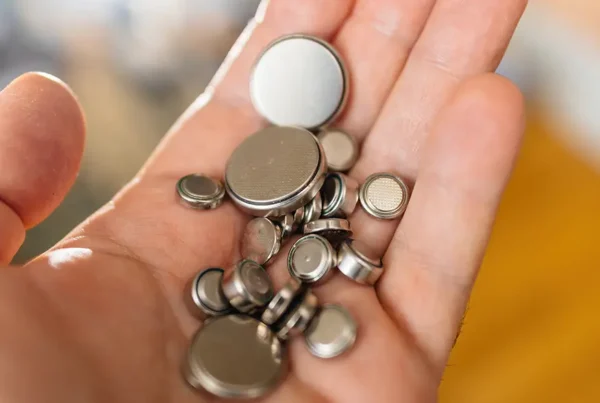Burn injuries are very common across all age groups and can even occur when taking the necessary precautions. A burn is characterized by damage to the skin cells, fat cells, and/or muscle by heat, chemical, electrical, or radiation source. Injuries may occur from simply touching a hot surface, spilling hot water on a body part, or touching a chemical without the proper protection. In some situations, burn injuries can be the result of someone’s negligence, such as electrocution or fire from faulty wiring, overexposure to radiation in medical treatments, or sub-standard escape routes in case of fire in a building. In this case, an experienced personal injury attorney in St. Louis can help you find justice for the damages and medical bills caused by this negligence.
There are many different types of burns, but the most common include thermal burns, accounting for nearly 86% of all burn cases requiring medical attention, radiation burns, scalding burns, inhalation burns, chemical burns, electrical burns, and surgical burns.
There are varying degrees of burns for each type, ranked first to fourth:
- First-degree burns are superficial, meaning they only affect the outer layer of the skin.
- Second-degree burns are slightly more severe, and they involve the outer layer of the skin and the deeper, second layer, called the dermis. These burns typically result in blisters.
- Third-degree burns destroy the first two layers of skin and can even reach the fatty layers under them. These are severe injuries and can make the damaged areas look charred.
- Fourth-degree burns, the most severe degree, burn through all layers of skin and fat reaching the muscle and sometimes bone. With fourth-degree burns, it is common for patients not to have any sensation in the affected area as the nerve endings have been destroyed by the burn.
In this blog, we will look at each type of burn, common causes and symptoms, and treatment plans.
Thermal Burns
Thermal burns are the most common burn injuries that require medical attention. These burns are the result of skin being too close to or touching excessive heat. Think of the heat from a closed grill – touching the surface of the grill’s lid will result in a thermal burn or even bumping into the underside can cause a small burn depending on how long there is surface contact. Anything that creates or uses heat can cause thermal burns if contact is made with direct skin, so it is not surprising these are very common. Depending on the severity of the burn, the outer layer of skin will turn red and sometimes blister.
Ointments, creams, and aloe vera gel, in the case of sunburns, can help reduce pain and heal the affected skin.
Radiation Burns
Radiation burns are more common in the field of medicine, usually in the treatment of cancers or during imaging scans. In these treatments, high doses of radiation are directed at a specific area of the body. As a result, the outer layer of skin will become red and sometimes blister. Also common is skin peeling following skin healing.
Ointments, creams, and lotions can help keep the skin moist and covered, often aiding the healing process. In some instances, scarring can occur from blisters.
Scalding Burns
Scalding burns occur when hot liquid is spilled on open, or even clothed, skin or if the skin is immersed in that hot liquid. Boiling water, hot wax, or hot oil can cause these scalding burns. These burns, if the liquid is removed quickly and without damaging the skin more, can result in simple redness and pain, but often, scalds result in blisters, peeling of the skin, and excruciating pain.
Ointments and creams, wraps, and oral pain medication can help treat scalding burns, but often it is best to consult a physician as infections are more likely than with other common burns.
Inhalation and Chemical Burns
Inhalation burns are commonly induced by fires and the resulting heated smoke. When a fire burns wood, fabric, or other objects, the smoke that is released can be hot. If this smoke is inhaled, the hot smoke will cause damage to the respiratory system, including the throat, esophagus, and lungs. Standing too close to a fire or being stuck in a building where there is smoke can lead to inhalation burns. Aside from hot smoke inhalation, inhalation of chemical gases can cause burns. Household cleaners and chemical agents including chlorine and ammonia create gases that, if inhaled, can cause inflammation, swelling, and sloughing of the respiratory tract, meaning the cells die and peel away. Internal burns are incredibly difficult to treat, which is why fire and chemical safety is taught at a very early age.
Common courses of treatment are oxygen therapy including ventilation and medications specific to the agent that caused the burn and current symptoms. For dangerous chemicals spilled on the skin or from chemical burns from cosmetics, common symptoms are similar to thermal burns including redness, blistering, and peeling. In some instances, prescribed medications and ointments are needed to heal the affected area and, depending on how deep the chemical agent penetrates, surgery may be required.
Electrical Burns
Electrical burns are caused by electricity entering the body, commonly through faulty, or just open, wiring. Electrical burns can cause external and internal injury because of electricity’s ability to pass through the layers of skin throughout the body. These burns can be mild, only causing redness and pain, or very severe, causing blisters, damage to nerve endings, and internal organ damage including heart failure.
Even if there is only mild external injury following electrocution, seeking medical attention is necessary as the effects of an electrical injury can be unknown until labs and tests are reviewed by physicians. For patients who go into cardiac arrest, treatment begins with CPR and other life-saving measures. For patients with external injuries only, ointments and creams can treat redness and pain. With nearly any internal organ having the potential to be injured in electrocutions, treatment plans are individualized.
Surgical Burns
Surgical burns can be the result of medical negligence or intent by physicians. Commonly, electrocautery is used in surgeries to keep blood vessels from bleeding and clouding the field of vision. In some instances, however, this tool can cause external injury if dropped on, or in, the patient, or if an organ is hit by the tool on accident.
In some cases, overheated medical equipment or chemical agents can touch the patient resulting in burns. Depending on whether the burn is internal or external, treatment plans are individualized for what caused the burn, whether there is any restriction of blood flow or organ function, and the amount of pain.
Find Professional Burn Injury Representation
With the many different causes and degrees of burns, situational awareness is important in preventing injury. Sometimes, however, even careful people can be the victim of someone else’s negligence resulting in burn injuries.
If you or a loved one experience a burn injury caused by the negligence of another, contact the burn injury attorneys at The Simon Law Firm, P.C. Our experienced attorneys research the law and relevant medicine to prepare the strongest case possible. Burn injuries are painful physically and emotionally and our attorneys embrace this to fight on your behalf for justice. Contact The Simon Law Firm, P.C. today for a free, confidential consultation.







